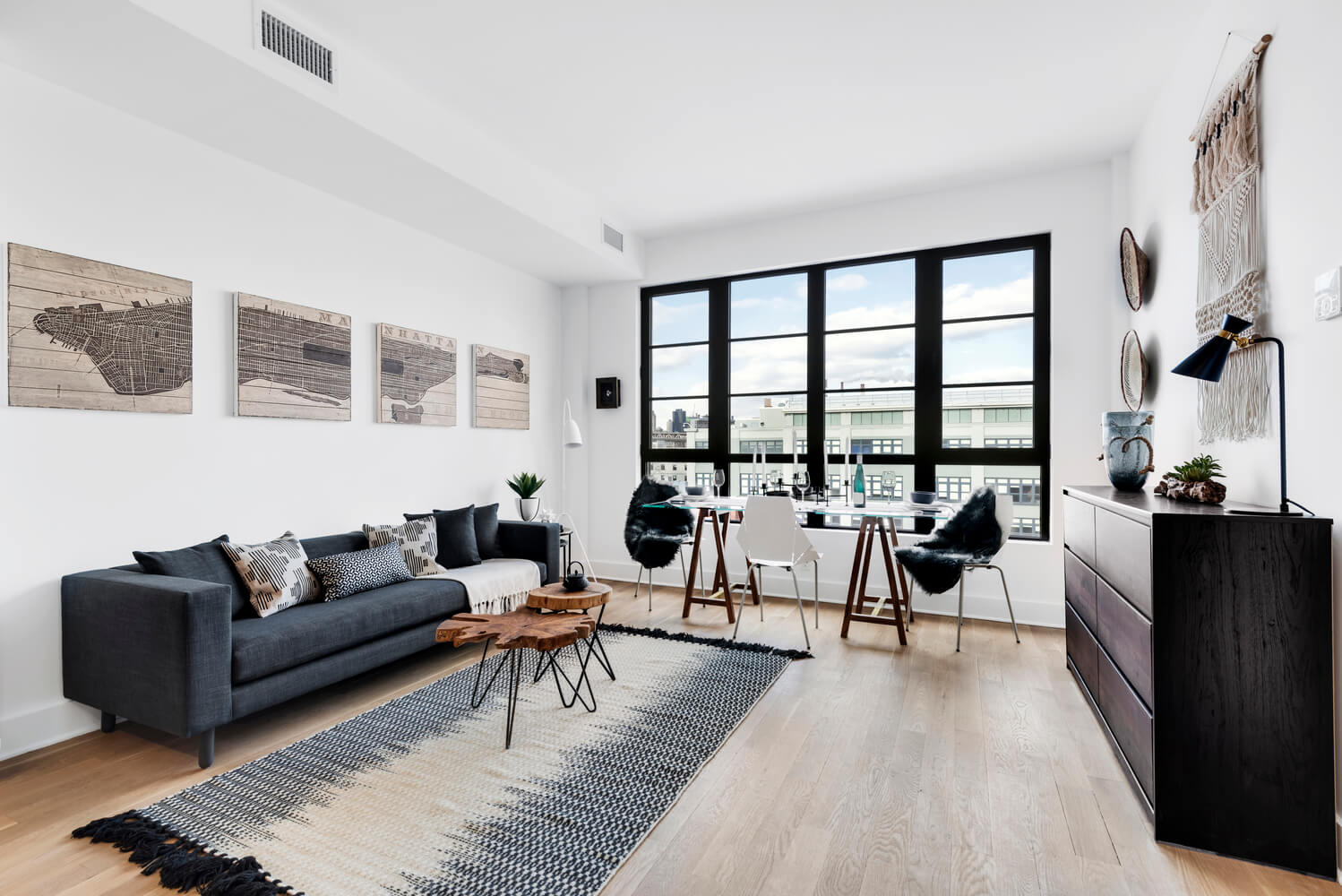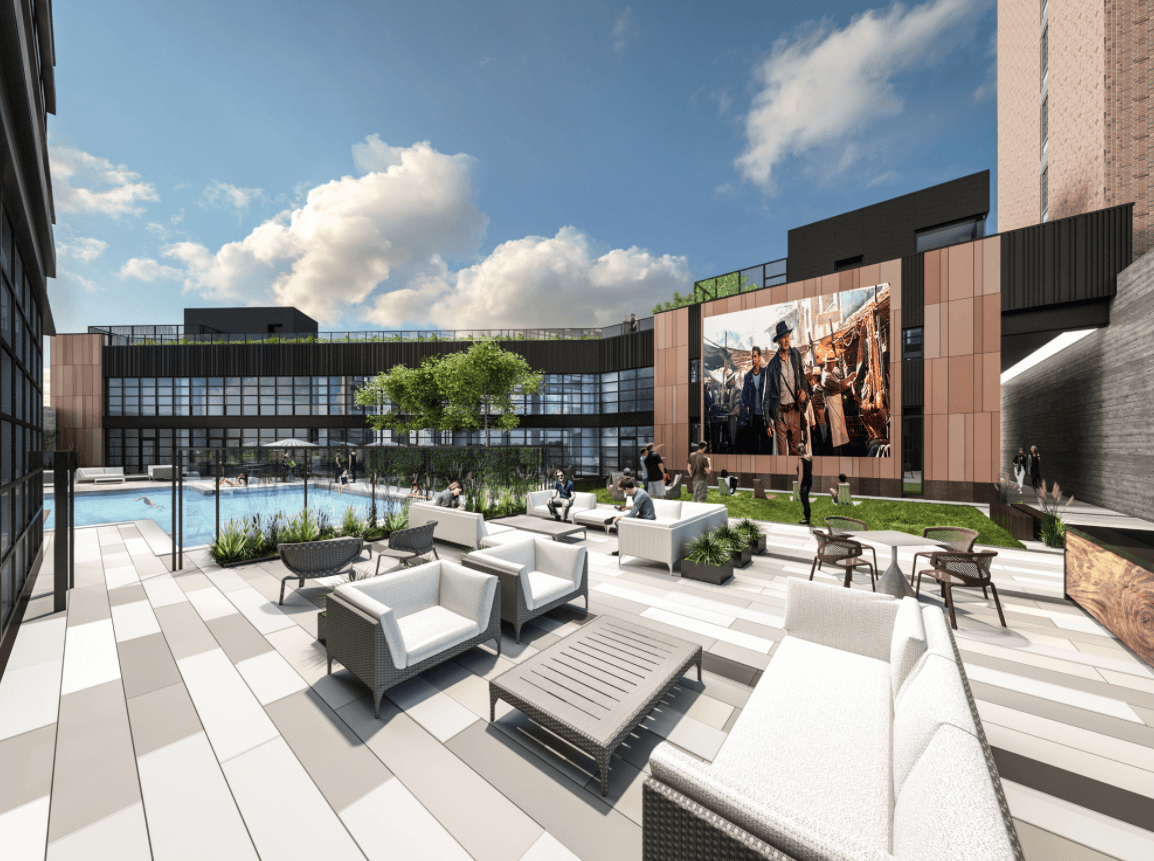How to build new libraries for Queens
The Woodside library Anyone who has been reading QueensNYC with even half an eye has surely noticed how much expansion and renovation has been going on with the Queens Library. Scheduled for the coming year alone, new projects include the 18,000 square foot location in Glen Oaks, replacing a two-story brick building from the 1950s;…

The Woodside library
Anyone who has been reading QueensNYC with even half an eye has surely noticed how much expansion and renovation has been going on with the Queens Library. Scheduled for the coming year alone, new projects include the 18,000 square foot location in Glen Oaks, replacing a two-story brick building from the 1950s; much-needed renovation of the Woodhaven branch; and the addition of a new location that will serve the growing residential areas of Long Island City, the avant garde library for Hunter’s Point.
Artist’s rendering of the Elmhurst Library
Construction has also begun on a replacement for the Elmhurst branch, doubling its size and a new library is underway for Far Rockaway designed by the Norwegian firm, Snøhetta. All of these capital projects speak to the popularity of the library system in Queens and the increasing number of patrons utilizing its 62 neighborhood locations.
Image source: Wikimedia Commons – the central Queens library in 1935
You may know that the Queens Library is a wholly separate entity from the New York Public Library, which serves the four other boroughs. It also receives the majority of its funding from New York City, as is appropriate for an organization that serves so many New Yorkers. The statistics are impressive. In the 2011-12 fiscal year, a total of 18.6 million items were circulated to 900,000 annual borrowers (a number that has risen steadily over the decades – testament to its ability to stay relevant and in communication with its neighborhoods). 13 million visitors came to use its branches in person, and 4.8 million visited electronically. Importantly, 707,000 people attended 37,500 free programs.
Image source: Wikimedia Commons – the Flushing library, in a neighborhood where many, many languages are spoken
Immersed in New York City’s most diverse borough, the Queens Library has always been a little different than other library systems, always in the business of serving its immediate communities by responding to needs arising in those places. In a borough where, according to the last census, no less than 138 different languages are spoken, the scope of classes for improving English language skills offered by the Queens Library has become both varied and focused over the years – there are ESOL courses, conversational practice sessions, Pre-GED classes, and English for Health.
Increasingly, the Library is offering job skill training, especially with an eye to making Queens residents competitive for the booming tech sector in the borough. You can get certification in Sigma Six, Quickbooks, and Autodesk software systems. Or you can do something fun like take a yoga class or send your kid to an art class. And we haven’t even talked about access to information electronically or through good old-fashioned books and periodicals.
Image source: Marble Fairbanks – artist’s rendering of the Glen Oaks library, currently under construction
So, in this age when the offerings of a public library – a place of lifelong learning – are so multi-faceted and, indeed, dynamic, how has this changed the way new facilities are being built? We spoke with communications director for the Queens Library, Joanne King, to learn what priorities shape the architectural program when a new branch is developed.
More Access to Information from Multiple Resources. The library is interested in connecting you with the best possible information, and maybe that information isn’t in a local book. Let’s say you’re researching Old Irish language – you might want to access the Codex Ardmachanus, written in Latin and Old Irish, a tome that is digitized and viewable online at Trinity College Library in Dublin. To study the Codex, you’re going to need a computer.
In the early 20th century when Andrew Carnegie was establishing his free public libraries, four of which are still in use in Queens, the aim was to build as much room for as many stacks as possible, which made sense at that time – there was no way they could foresee a world so virtually interconnected. Additionally, thousands of titles are available for eReader devices, further eliminating the need for physical space for books since less hard copies will be required. Don’t worry, the Queens Library Children’s Discovery Center, a new addition to the main facility in Jamaica, in addition to presenting interactive exhibitions and learning labs focused on science, still has 70,000 books.
Targeting Teens. Teens and young adults have certainly not been ignored by the publishing industry, and the Queens Library has been circulating plenty of copies of Twilight and The Hunger Games. And while the reading needs of children has historically been well-addressed within structured areas of the branches featuring little furniture and special readings, in the Carnegie era, most working-class teens were, in fact, working, and not spending time at the library, and so most branches don’t feature areas dedicated to this population. But it’s well observed that the learning styles of teens are best suited to a casual environment with less structured furniture and where it’s okay to snack, a situation amenable to collaboration. Providing spaces where teens can congregate after school and on weekends is thus an institutional priority. The new Elmhurst location, which is a regular multi-generational branch, will have space specifically for teens and young adults.
Image source: NYDN – artist’s rendering of the Hunters Point library
Outdoor Spaces. Public libraries can be places of quiet contemplation – the Queens Library would like to take extra steps to make sure they are. For this reason, they’re programming in, where appropriate, outdoor sitting and reading spaces. Case in point: the new branch at Hunter’s Point will feature an outdoor roof terrace as well as a communal reading garden, excellent places to study and enjoy views of Gantry Plaza State Park, the East River and the Manhattan skyline.
Artist’s rendering of the Adult Learning Center in Rochdale Village
Flexible Spaces for Effective Community Outreach. Since public programming is one of the key tenants of educational service for the Queens Library, making space available for classes, forums and sessions is not an afterthought, it’s a central part of the plan. So is creating spaces that are welcoming, make sense in terms of wayfinding, and are not intimidating for even the first-time visitor. Construction is underway to significantly expand the Adult Learning Center in Rochdale Village, a project that will provide expanded classroom space, additional computers and listening stations, and greater study/conversation group space.
Consider What Libraries Will Need To Do and Be Decades from Today. While none of us have any idea what the world will look like in the next century, people will always be motivated to seek knowledge and to broaden their horizons through education. Teachers will still be assigning reports. Teens will still seek comfortable and friendly places to go. New Yorkers will always appreciate a little peace and quiet. The Queens Library buildings going up today will be in use for many years and will – if all goes according to plan – be able to adjust to the needs of the lifelong learners of the future.















One more matter. I live in Jackson Heights, and rarely even go to that branch because it is so overcrowded for such a dense and large neighborhood. As an alternative, I go to Woodside branch, which always seems sparsely attended. My question is–when is Jackson Heights going to get a desperately-needed new library?
The article suggests that the Queens Library system is unlike the New York Public Library, which serves the “other four boroughs”. I was under the impression that the NYPL serves The Bronx, Manhattan, and Staten Island only, and that the Brooklyn system is a separate entity.
Yep. Queens and BK both have their own systems.